- Duncan Edwards
- Albums and Singles
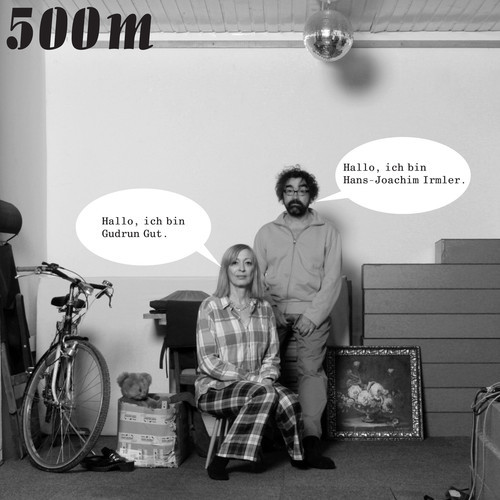 500m beautifully combines Gudrun Gut’s programmed percussion and editing discipline with Jochen Irmler’s meandering organ playing and natural spontaneity.
500m beautifully combines Gudrun Gut’s programmed percussion and editing discipline with Jochen Irmler’s meandering organ playing and natural spontaneity.
This album comes from two sessions recorded in the autumn of 2013, at the Faust studio in Scheer. These consisted mainly of Irmler leading, by improvising some tracks for as long as thirty minutes, with Gut providing basic beats and a rudimentary framework and mood. Later, in her Berlin studio, she reassembled, deconstructed, and refined the session tracks into shorter pieces. Irmler kept his distance, hearing the progress of her work via file sharing. This creating-at-a-distance should not have been a problem for him, not at least if the story is true that in the early days of Faust he had a cable run from his bedroom so he didn’t have to come into the studio, and could even play while in bed. Perhaps it is no coincidence that Gut appears to be wearing pajamas on the cover artwork. In any event, the splendid contrast between her whispered, breathy, vocals, and shards of drum programming, echo, clipped and spliced or untreated keyboards, all combine to produce a landscape suggestive of darkness and twinkling stars.
Searching for clues to 500m through attempts to translate the German names of some individual tracks into English, threw up such titles as "Perfume," "Noah," "Chlorine," "Fracture," and the amusing chronology of "Tangerine," followed by "Dream." Listening to the record made me feel as if I were dreaming of walking alone through a series of rooms in a huge deserted factory, hearing the sound of echoing footsteps and machines briefly bleating into life or fade into silence. The title relates to the fact that Gut reported feeling dizzy the whole time - which Irmler explained may have been due to them being 500m above sea level.
 
Read More
- Administrator
- Albums and Singles
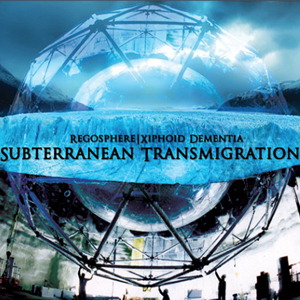 As a split release with each artist submitting three pieces, the pairing is perfect.  The two projects share similar aesthetics and aptitude in their own take on modern industrial music.  Even though their individual work is clearly distinct from each other, the two fit together very well into a cohesive whole.
As a split release with each artist submitting three pieces, the pairing is perfect.  The two projects share similar aesthetics and aptitude in their own take on modern industrial music.  Even though their individual work is clearly distinct from each other, the two fit together very well into a cohesive whole.
Of the two, Regosphere (Andrew Quitter) leans a bit more towards the rawer, noise tinged sounds on his three compositions.  A pulsing synth and shrill digital noise of "Psychic Surgery (Second Procedure)" are paired with a heavily churning bass line that is not quite harsh enough to constitute power electronics, but certainly leans in that direction.  The harshly processed and destroyed vocals push this even further, even though they are completely indecipherable.
Quitter dials the harshness back a bit on "The Devil’s Icebox," keeping the bleeping electronics but adding in an overdriven kick drum passage.  The monotone thud is offset by dramatic, complex layers of electronic and what almost sounds like prog rock keyboard progressions.  "Coffin Dust" draws more from sound effect bits and an overall messier sound without ever becoming too dissonant.  Compared to the previous two Regosphere pieces, this one feels a bit less focus or structured but still works in its own way.
On his half, Egan Budd (Xiphoid Dementia) utilizes metal and junk percussion throughout, to excellent effect.  The slow build of "Despondency Aquifer" leads in with a rumbling bass drone and dramatic sweeps of noise that, at this point, are more understated than Regosphere’s work.  The piece eventually expands amongst obvious synths and tolling digital bells with overdriven percussion.  The final result lies somewhere between a modernized take on SPK’s Information Overload Unit and the best moments of early Dissecting Table.
Budd strips things down a bit on "Beneath the Foundation," pairing gentle ambience with crunchy, overdriven waves of noise.  With the junk percussion thrown in, it feels consistent with the previous piece, but in a less musical sense overall.  Musicality also takes a back seat on "Mineral Resurrection," as Budd places the percussive clanking and banging in a subterraneous cavern expanse.  Drifting through the heavy reverb, a sense of malignance looms during the more restrained minutes.  Slowly the piece builds to an explosion of distortion and harshness, resulting in an appropriately explosive climax.
Regosphere and Xiphoid Dementia share a lot of commonalities, but each stands on their own.  On this disc the former brings the harsher noise electronic sound, while the latter’s emphasis on junk percussion embraces that Einstürzende Neubauten/Test Department aesthetic, but within a more electronic framework.  It manages to be one of those split releases where two different halves mesh together brilliantly into a coherent and fully realized whole.
samples:
- Despondency Aquifer (Xiphoid Dementia)
- The Devil's Icebox (Regosphere)
- Beneath the Foundation (Xiphoid Dementia)
 
Read More
- Administrator
- Albums and Singles
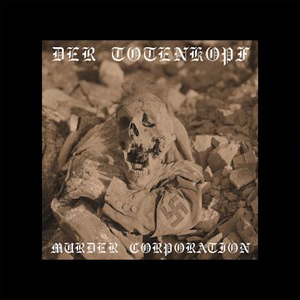 As one of the major triumvirate of Italian power electronics (alongside Atrax Morgue/Marco Corbelli and Mauthausen Orchestra/Pierpaolo Zoppo), Moreno Daldosso has not released any new material in over a decade, and Der Totenkopf may be his final recording. With his two peers no longer with us, this record serves as an epitaph for this distinct group of artists, and it fits right in amongst the best of those albums.
As one of the major triumvirate of Italian power electronics (alongside Atrax Morgue/Marco Corbelli and Mauthausen Orchestra/Pierpaolo Zoppo), Moreno Daldosso has not released any new material in over a decade, and Der Totenkopf may be his final recording. With his two peers no longer with us, this record serves as an epitaph for this distinct group of artists, and it fits right in amongst the best of those albums.
The three aforementioned artists are essentially the antecedents of Maurizio Bianchi's first period of activity, albeit with different aesthetics.This subgenre has always heavily utilized serial murder, necrophilia, and Third Reich, making for an essentially perfect mirror image to Italy’s contribution to international cult film:giallo, zombie, and Naziploitation.In an appropriate parallel to the films, however, the use seemed to be to invoke horror rather than political ideology.
Der Totenkopf is no different, and Daldosso makes no attempt to hide the theme based on the cover art alone.Unlike Atrax Morgue or Mauthausen Orchestra, however, the two pieces that make up this album are not heavily steeped in harsh analog synthesizers, but instead hollow, cavernous layers of minimalist noise.The undeniable sense of gloom and depression (which can be traced back to Bianchi's earliest experiments) does pervade this record though, another hallmark of the Italian school of harsh electronics.
On the A side, bits of the German marching music that acts as the primary source material slips through in shards, echoes and delays stretching the only recognizable sounds out into the murky, muddy expanse of sound.The flip side showcases the source material more, with obvious fragments of horn fanfare stretching out from a hollow, reverberating electronic din.Throughout the gray monochromatic ambience, what sounds like the stomping of boots create some rough semblance of rhythm via loops and delay that always stays just a bit uncomfortable and off kilter.
Rather than the harsher sound I expected, Murder Corporation emphasizes menace and restraint in his bleakness.The moroseness of this record cannot be understated, just like the best records from this roughly defined scene.It might not be a record I will play every day, but when the mood strikes, Der Totenkopf hits all the right buttons.
samples:
 
Read More
- Administrator
- Albums and Singles
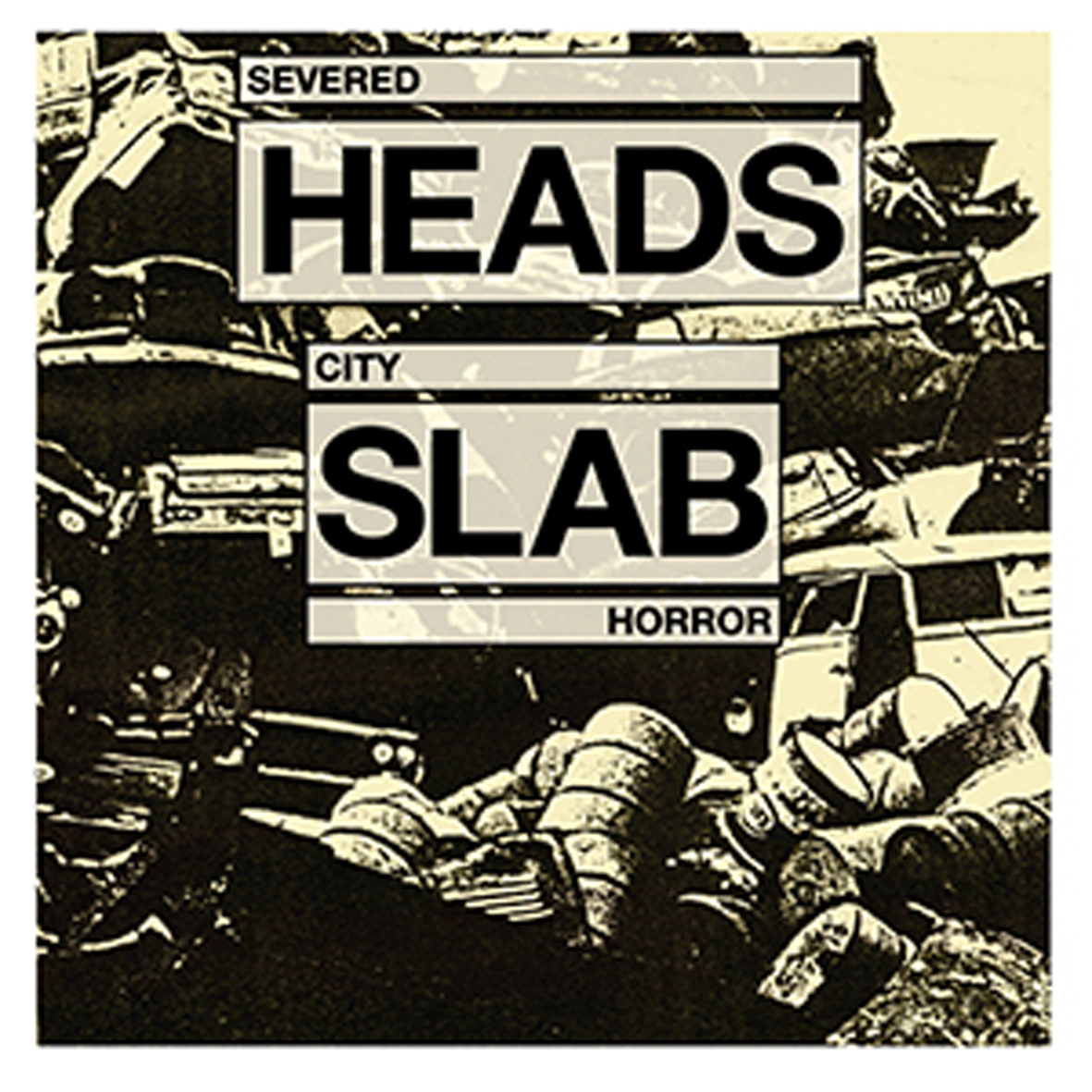 Much to my delight, Medical Records has recently reissued two of the arguable jewels of the Severed Heads' discography: 1983's Since the Accident and this effort from 1985.  Both hail from the transitional period between the messy, contrarian experimentalism of the band's early years and Tom Ellard's later forays into more conventional electronic pop.  While City Slab Horror lacks anything like a hit single (Accident had "Dead Eyes Opened"), it is actually the more listenable of the two releases, finding a fine balance between Ellard's more perverse and absurdist tendencies and actual beats and hooks.  Naturally, the primitive technology employed sounds rather dated thirty years later, but Ellard's distinctive eccentricity remains as charming as ever.
Much to my delight, Medical Records has recently reissued two of the arguable jewels of the Severed Heads' discography: 1983's Since the Accident and this effort from 1985.  Both hail from the transitional period between the messy, contrarian experimentalism of the band's early years and Tom Ellard's later forays into more conventional electronic pop.  While City Slab Horror lacks anything like a hit single (Accident had "Dead Eyes Opened"), it is actually the more listenable of the two releases, finding a fine balance between Ellard's more perverse and absurdist tendencies and actual beats and hooks.  Naturally, the primitive technology employed sounds rather dated thirty years later, but Ellard's distinctive eccentricity remains as charming as ever.
Notably, Severed Heads was still sort of an actual band rather than a one-man show during the recording of City Slab Horror, as the album was primarily a fraught collaboration between Ellard and new member Paul Deering.  Admittedly, Deering was a surprising choice as a bandmate, as he was more interested in making crunching industrial music, while Ellard was intent on taking the band in a more "skewed electronic pop" direction.  Also, the name "Severed Heads" was originally chosen as a joke, as Ellard and some of his former bandmates thought it would be hilarious if people thought a bunch of Australian weirdos from the coastal suburbs were scary industrial provocateurs.  While these sessions unsurprisingly ended in a screaming match and Deering moving away, Paul's influence on the album is pleasantly evident in the thudding, obsessive drum machine rhythms of pieces like "Ayoompteyempt" and the swaying, sea-sick menace of "Spitoon Thud" and "Voices of the Dead."  Despite that unsustainable situation, the band's two wildly disparate directions actually do not sound all that schizophrenic at all here and actually make for an intriguingly varied and unpredictable album.
Of course, the most memorable pieces are still Ellard's fledgling stabs at something resembling pop, the best of which is probably the buoyant and upbeat "4.W.D.," which is seemingly the only song that Ellard himself sings on the album.  Though it boasts a propulsive enough beat, pleasant sing-song melody, and charmingly clunky synth hook, the true appeal lies in how wrong it sounds when compared to the sophisticated synthpop that folks like Human League and O.M.D. had already been putting out for years.  Somehow "4.W.D." manages to seem naively childlike, effortlessly aberrant, and gleefully self-sabotaging at the same time, as if Ellard was completely unaware that his contemporaries were miles ahead of him in both technology and songcraft and believed that his own ramshackle, primitive, and surreal pop song about a jeep ripping through his chest was perfectly relevant and marketable.  Of course, he was aware and just did not care, though his later albums would show a definite move towards more conventional sounds (even if his core sensibility largely remained completely out of step with the rest of the world).
City Slab Horror offers up a few other attempts at pop and dance as well, with varying degrees of success.  My favorite of the bunch is the thumping, Garry Bradbury-sung "Now, An Explosive New Movie," which still sounds like a sure-fire floor-filler at an industrial dance night (despite its dated fake-horn stabs).  The album's single "Goodbye Tonsils" is another delightful song, embellishing a somewhat rudimentary synth melody with all kinds of skittering, stuttering chaos and movie samples (and some more help from former member Bradbury).  "We have Come to Bless This House" treads quite similar territory, but does so in a more cheerily plodding way that can best be described as "gloriously '80s."  The surprisingly aggressive industrial dance of "Cyflea, Rated R" is yet another classic of sorts, though it actually sounds much more like Skinny Puppy or something than like Severed Heads, despite the chopped-up, gibbering samples.
There are also a handful of songs that do not sound like either low-budget, garage synthpop or industrial soundscapes and those odd experiments are what elevate the album into something special for me. In particular, I like "The Bladders of a Thousand Bedouin," which is a squelching, clattering, and obsessively repetitive tape-loop (or sampler) experiment.  Another minor gem is "Guests," which weaves a sublime spell with floating, ghostly swells of choral samples.
That said, City Slab Horror does not actually boast a single song that I love, just a disproportionate number of songs that I like.  That is part of what makes this album so unique in Ellard's discography, as I have always found him to be a very hit-or-miss artist, just as capable of being absolutely brilliant as he is of being absolutely annoying.  As a result, there are very few Severed Heads albums that I enjoy in their entirety–probably just this one, Cuisine, and perhaps Since The Accident.  In any case, City Slab Horror is a memorably bizarre and unique album that documents a particularly fertile, adventurous, and messy period in Ellard's evolution in which he was still heroically deviant and inventive, yet hugely limited by the gear available to him and still figuring out where he wanted to take the project.  Extreme limitations seem to yield remarkable results sometimes and this is one of those instances: while it certainly sounds both primitive and dated in 2014, City Slab Horror also sounds dramatically more distinctive, deranged, vibrant, and memorable than anything released by most of Ellard’s better-known contemporaries.  It is not seamless and it is not pretty, but it is certainly still compelling.
(Note: previous versions of this album feature some bonus tracks from Blubberknife.  They are a likable addition, but do not strike me as particularly essential.)
 
Read More
- Administrator
- Albums and Singles
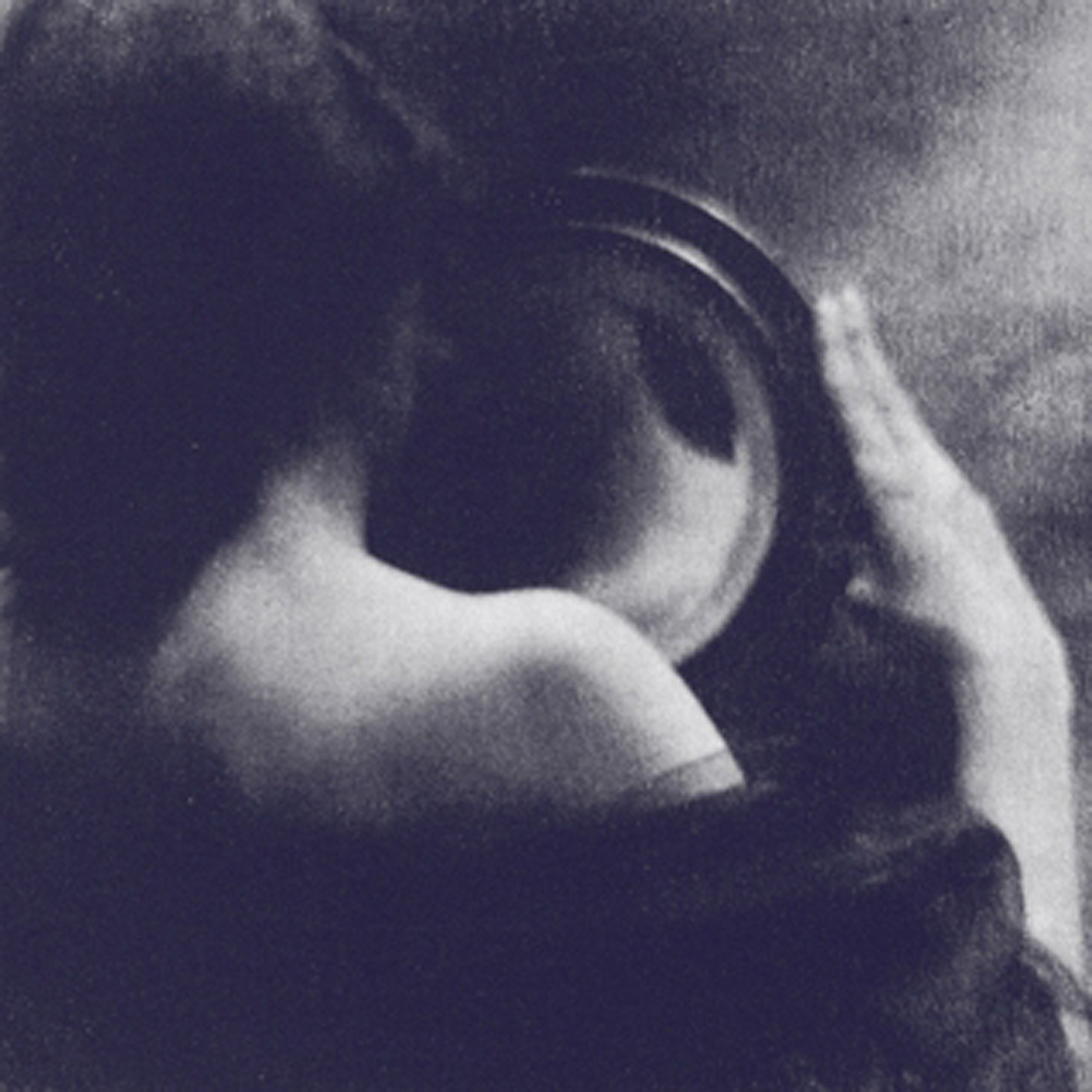
I hate to use the phrase "return to form" to describe this album, as I have enjoyed most of Lawrence English's divergent recent efforts quite a bit, but Wilderness of Mirrors reminds me favorably of the darker, heavier albums that brought him to my attention in the first place (such as Kiri No Oto and It's Up To Us To Live).  Characteristically, English also offers an intriguing concept on Wilderness, but the primary appeal is simply that it is wonderful to finally get another substantial offering of what he does best.  That said, this effort does offer a few surprises, as Lawrence has picked up a few neat tricks from folks like My Bloody Valentine and Swans since he last surfaced in heavy drone mode.
Wilderness of Mirrors borrows its name from a line from T.S. Eliot's darkly ruminative "Gerontion," but in sort of a second-generation way, as the phrase was re-purposed during the Cold War to describe campaigns of deliberate misinformation.  That second use is what inspired the structural aesthetic of Wilderness, as each piece features a buried motif that has been fed back into itself to the point of unrecognizability.  That said, neither those endlessly mirrored loops nor English's increased appreciation for the power of volume and density were particularly conspicuous or revelatory parts of my actual listening experience, except in the case of the crushing and ominous "Another Body," which sounds like the slow-motion collapse of a mountain or a city.  For the first few minutes, I could not believe that such seismic ruin could be coming from a Lawrence English album, but "Body" gradually becomes more traditionally English-esque as it progresses and the rest of the album does not depart all that much from Lawrence's previous work (though it is noticeably scarier in places than I would have expected).
Of course, I still enjoy that traditional "Lawrence English aesthetic" very much, so I was not disappointed that the remaining surprises were comparatively minor.  That is not to say that English has not evolved noticeably–rather, bluntness just is not a Lawrence English trait, so the enhanced sizzle and frequency-saturation of pieces like the wonderful "Forgiving Noir" are probably only apparent to those of us actively looking to notice such things.  In most other respects, Wilderness is simply an enjoyable return to the rich vein of previous excellent Lawrence English drone albums, offering up a heavy, slightly distorted thrum that vibrantly pans and undulates and never sinks into dull stasis or straightforwardness.  To his everlasting credit, English is never content with simple oceanic, immersive density: there is always something deeper happening melodically, harmonically, or texturally.  A prime example of English's mastery in this regard is the opening "The Liquid Casket," which evolves from ominous feedback to a restrained shoegaze roar that gradually fills with uneasy dissonances and harsher metallic sounds, evoking a pile of rusty knives being dragged by a slow-motion tidal wave of molasses (or especially viscous blood).
If Wilderness has a flaw, it is that it moves a long a bit too quickly for my taste, as there are several 2- or 3-minute pieces amidst these 8 songs.  For example, the title piece feels like just a brief extension of "The Liquid Casket" and the following "Guillotines and Kingmakers" is a mere 2-minute interlude of dark ambient atmosphere.  While the segue between "Guillotines" and "Another Body" is admittedly quite a deft and striking one, it still basically feels like Wilderness goes right from the opening piece to already being halfway over, barreling through two transitional pieces before I even realize that they are happening.  While I do think English did a fine job with the sequencing, I also feel like Wilderness is basically just three (or so) great, fully formed pieces and a whole lot of transitional, incidental music and falling action.  As a result, Wilderness feels more like a stretched EP than a truly solid album, so it does not quite stand with English's best work as a whole.  When taken on a song-by-song basis, however, Mirrors boasts some of the most powerful and distinctive individual pieces of Lawrence's career.
 
Read More
- Administrator
- Albums and Singles
The first new full-length Godflesh album in 13 years will be released on Justin Broadrick's own Avalanche Recordings label on October 7, 2014.
More information will eventually be posted here.
A new song ("New Dark Ages") can be heard here.

Read More
- Administrator
- Albums and Singles
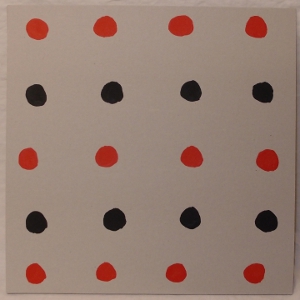
Jason Kahn
Noema
(2014)
Editions 003 Double LP
http://jasonkahn.net/editions
Edition of 250
Heavy weight 180 gram vinyl
Hand-painted covers on thick gray cardboard
Source material recorded July to October 2012 in Kyoto.
Pieces composed January 2013 to March 2014 in Zürich.
Mastering, liner notes and LP artwork Jason Kahn.
- - - - - - - - - - - - - - - - - - - - - - - - - - - - - - - - - - - - - - - - - - - - - - - - - - - - - - - - - -
Noema is a collection of 37 short pieces composed from
source material I recorded in and around Kyoto during a
three-month stay there with my family in 2012.
The over-arching theme of the record is the idea of exploring
social space through everyday sound – and especially in the
case of Kyoto, not just focusing on what we've come to know
the city for (temples, shrines, etc. – though some of these are
in there as well).
The pieces also deal with the idea of memory, much as the
famous "episode of the madeline" in Marcel Proust's Remembrance
of Things Past, in which the taste of the madeline dipped in tea
triggers a flood of involuntary memories. For me, many of the
sounds used in these pieces work the same way.
The word noema is often used in philosophical discourse to describe
the object of thought – and in the case of this record, the sounds
themselves and the structures they contribute to in the
production of social space.
Read More
- Administrator
- Albums and Singles
Beautiful Noise is the first-ever documentary about one of the most influential, underground music movements of the late 20th century.
Featuring members of: Cocteau Twins, The Jesus & Mary Chain, My Bloody Valentine, Ride, Slowdive, Chapterhouse, Swervedriver, Lush, Curve, Pale Saints, Seefeel, and more.
Created by filmmakers Eric Green (Writer/Director) & Sarah Ogletree (Producer/Editor) and their production company HypFilms, Beautiful Noise is a DIY, indie film and passion project inspired by a deep appreciation of the music and the desire to see it documented in musical history.
The genesis of the project began with the principals Green in April of 2005 and Ogletree and evolved over the course of many years and with the help of a great many people who believed in the project and donated their time, equipment, knowledge, and even money to see this film released.
Following a successfull Kickstarter campaign and a protracted licensing phase, the filmmakers were able to complete the film.
Beautiful Noise Premiered May 31, 2014 at the Seattle International Film Festival and Internationally June 8, 2014 at the Sheffield International Film Festival. Currently it continues to screen in festivals and will next be released on Home Video (date to be announced soon).
More information can be found here.

Read More
- Administrator
- Albums and Singles
 There may be some throwback elements on Ars Phoenix's most recent album, but for the most part it makes for great contemporary synth pop. Retaining a darker, and occasionally harsh, edge, the eight songs that comprise it work beyond just their mood, but as memorable, well-written songs as well.
There may be some throwback elements on Ars Phoenix's most recent album, but for the most part it makes for great contemporary synth pop. Retaining a darker, and occasionally harsh, edge, the eight songs that comprise it work beyond just their mood, but as memorable, well-written songs as well.
There is a distinctly bleak, gothic vibe pervading these songs, evident from the opening moments of "Chlorophyll".A rudimentary, stiff rhythm and strong guitar parts lead the song while the duet vocals from Jon Glover and Catlin Ollinger mesh wonderfully with understated keyboard progressions.On "Amethyst" the trio (plus guitarist Paige Fowler) follow a similar template, focusing on guitar and synth flourishes as it builds to a tighter, more forceful conclusion.The goth and synth pop elements are undeniable, but never are they cliché or exploited.
The spirit of the early days of synth pop pervades the album, but thematically "Who Is Watching the Neighborhood Watchmen?" makes for an update of that classic theme of early industrial:paranoia.As Cabaret Voltaire built some of their legendary albums on the consequences of CCTV surveillance, Ars Phoenix updates it to drones and social media with a subtle nod to the Trayvon Martin/George Zimmerman case in its title.
As a whole, Violent Rain is rather slow and laconic, but at times the tempo is knocked a little higher, contrasting the more depressive moments.Ars Phoenix snaps along with a punky thrash on "Elegant Vapor," with noisier synths and a strong, memorable melody."WHTY?" is another uptempo one, with its stiff drum machine, noisy saw tooth keyboards and lots of random noises that still manages to build into a catchy chorus.
Locrian member Terence Hannum adds a bit of overdriven guitar to "Shudder at the Sound," and its oddly paired distorted drum machine and electronic noises, making its dirge a bit more varied than it could be.The most drastic departure is on the closing title song, the lengthiest on here.Depressive sawtooth synths and clattering rhythms set the stage; with the focus being spoken word narrative of Ollinger.The sound is more diverse here, with a brilliant death rock guitar heavy conclusion, although I feel the vocals are emphasized just a bit too much throughout.
Unlike many in the industrial/synth pop revivalist movement, Ars Phoenix makes no attempt to sound like they are tied specifically to the early 1980s.Their use of drum machines and synths might be in line with those days, but their overall approach is far more contemporary.It balances the familiar and fresh expertly, and results for some extremely catchy songs, the type of record that draws me in over and over again.
samples:
 
Read More
- Administrator
- Albums and Singles
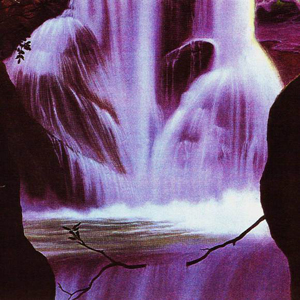 Recorded between California, Texas, and England, Qui Mal y Pense reissues one of Smokey Emery's (Daniel Hipólito) most complex and nuanced works, and the third in his Soundtracks for Invisibility series. Created entirely from hand manipulated open reel tapes, it is a lush, dramatic series of compositions that would work very well as a true soundtrack, but are just fine as stand alone music.
Recorded between California, Texas, and England, Qui Mal y Pense reissues one of Smokey Emery's (Daniel Hipólito) most complex and nuanced works, and the third in his Soundtracks for Invisibility series. Created entirely from hand manipulated open reel tapes, it is a lush, dramatic series of compositions that would work very well as a true soundtrack, but are just fine as stand alone music.
The brief introductory "01" is all sci-fi noises and echoes over a soft ambient passage, but the remainder of the album embraces the latter more than the former, which was a smart decision, as the pseudo '60s electronic sound is overused to say the least.The nearly 31 minute "05" also heavily emphasizes ambient spaciousness, mixing sustained electronics and a buried, ragged melody.It is not all that dynamic, but expands, dense and menacing, with only the most fragmented of melodies slipping out.
Even though this release was constructed mostly from processed magnetic tape, it sounds as if traditional instruments manage to slip through from the original source material, such as the simple guitar melodies on "Afore."Bathed in reverb, Hipólito builds walls of reverb around the guitar, slipping into ugly noise in its closing minutes.A guitar (or sound-alike instrument) also appears on "The Room Falls Away" with tremolo heavy electronic expanses.It is comparatively simple in its construction, but no less captivating.
What sounds like mangled, bowed strings contrast a dour melody on "04," the dissonant and melodic pair conveying sadness on the first half, and then foreboding menace on the second.The paring of the two extremes also helps to define "02," with drifting bassy electronics mixed with spiny, acidic bits of noise to offset them, resulting in a piece of creaking moodiness and heavy reverb.
Even though it was constructed with such a basic strategy, Daniel Hipólito extracts a world of sounds and atmospheres out of those old spools of magnetic tape.What could just be a mundane collection of loops is instead a cinematic expanse of sound, mysterious and oblique in its abstraction.The final product though, befittingly presented on cassette tape, carries just the right amount of mystery to unravel in its gauzy layers.
samples:
 
Read More
- Administrator
- Albums and Singles
 In some ways, Gog’s new LP comes across as a rebirth of the project that keeps the best elements of Michael Bjella's work while pushing boundaries and expectations. The bleak, moody guitar noise is still there, culled from the best bits of metal and drone, but Gog manages to go further and make music that is challenging, but still memorable as songs, rather than just compositions.
In some ways, Gog’s new LP comes across as a rebirth of the project that keeps the best elements of Michael Bjella's work while pushing boundaries and expectations. The bleak, moody guitar noise is still there, culled from the best bits of metal and drone, but Gog manages to go further and make music that is challenging, but still memorable as songs, rather than just compositions.
The most striking change for me was right on the surface:the cover art.While previous releases have stuck to a dark gray/black palette and more traditionally metal imagery such as skulls and the like, Gog is bright red and stark.Paired with the bold, block yellow lettering on the back, I was reminded of vintage communist propaganda posters, which surely is no accident.
This does not carry over to the music, however, with these five songs not diverging drastically from previous Gog albums, but having an additional layer of complexity and polish.Bjella channels this on "The Lies, They Want to Give You Something," by pairing deep, pounding bass with depressive piano.His penchant for excellent guitar noise is omnipresent and slips in nicely, miraculously drifting into a melodic squall toward the end.
The piano also features prominently on "First Night After Death," within a subtle expanse of ambience and a dull, building guitar roar.With drums provided by Josh Bodnar, it comes together in a bombastic, powerful conclusion that closes the album chillingly well."The First Cure" leads in with the softest moments of the album.Soft electronics and gentle vocals by guest Francesca Marongiu (Agarttha/Architeuthis Rex) set a gentle, haunting stage that are blown away by rapid fire drums and blackened guitar noise, her beautiful voice replaced with Bjella's grindcore growl.
On "Before You Go, We'd Love to Tear You to Fucking Pieces," Bjella is at his most conventional, with grimy, dirgy bass and the pounding drums providing the rhythmic foundation for his droning guitar noise.It might not be as adventurous as some of the other songs here, but it is so well done that it is completely irrelevant.At the other end of the spectrum, "Until the Body Runs Dry" is just a grinding expanse of fuzzy low volume noise.More textural and abstract, it works great as a moody low-key midpoint to the album.
The biggest evolution on this album is Gog's transcending the experimental metal scene and becoming a different, uncategorizable beast.The sound he honed on recent albums is still present, but is fully realized here.It also manages to be memorable, because none of these came across as just excursions in sound or directionless experiments, but instead as actual songs.While they might not be type to sing along to, Michael Bjella's compositional ability cannot be denied.
samples:
 
Read More